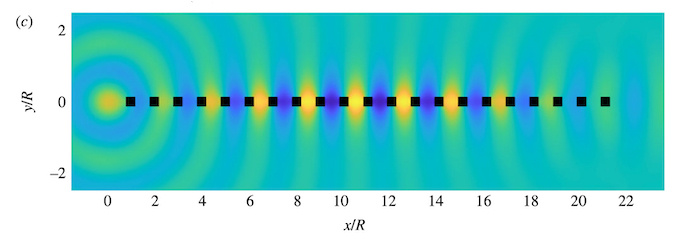THE LATEST
Australian researchers build groundbreaking wave scattering simulation software

Can advanced technology soon make invisibility cloaks and other imaginative uses of metamaterials a reality, or is it all just a product of scientific imagination? A new software package from Macquarie University in Sydney, New South Wales, Australia, claims to bring us one step closer to these futuristic possibilities, but not everyone is convinced.
The software, known as TMATSOLVER, boasts the ability to model the intricate interactions of waves with complex materials accurately. Researchers from Macquarie University, in collaboration with various institutions worldwide, are demonstrating the software's ability to simulate multiple wave scattering scenarios.
Lead author Dr. Stuart Hawkins praises the software's capability to model configurations of particles that were previously thought to be unachievable. By using the transition matrix (T-matrix) to describe how objects scatter waves, TMATSOLVER seems to offer a shortcut in designing metamaterials, which are synthetic materials engineered to manipulate waves in unconventional ways.
However, some skeptics question the software's claims of revolutionizing metamaterial design. Dr. Lucy Bennett from an independent research institute remains cautious, stating, "While the concept of TMATSOLVER sounds promising on the surface, the actual implications of its application need to be critically examined. The practicality and real-world impact of such simulations invite scrutiny."
Despite Dr. Hawkins' claims of rapid prototyping and validation of new metamaterial designs, some experts raise concerns about the software's effectiveness in practical settings. Dr. Bennett notes, "The gap between simulation and real-world implementation remains a significant challenge. The 'easy-to-use' tagline of TMATSOLVER may oversimplify the complexities of metamaterial engineering."
Metamaterials, with applications ranging from super-lenses to invisibility cloaks, have sparked the imagination of scientists and engineers. However, as the buzz around TMATSOLVER grows, so do the voices of skepticism, calling for a more thorough assessment of its true potential.
As the debate over the impact of TMATSOLVER continues, only time will tell whether this software signals a new era of metamaterial innovation or turns out to be a passing trend.

